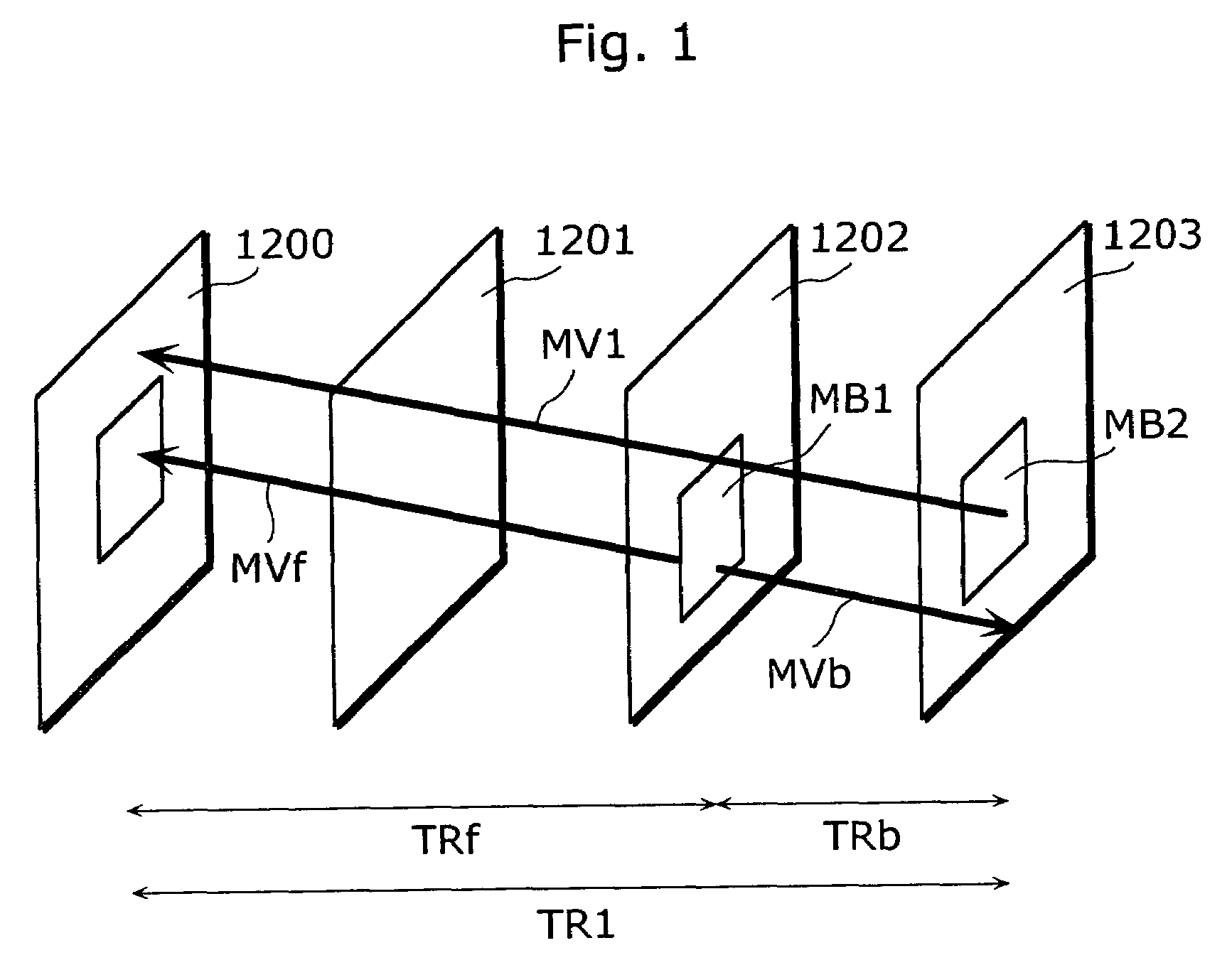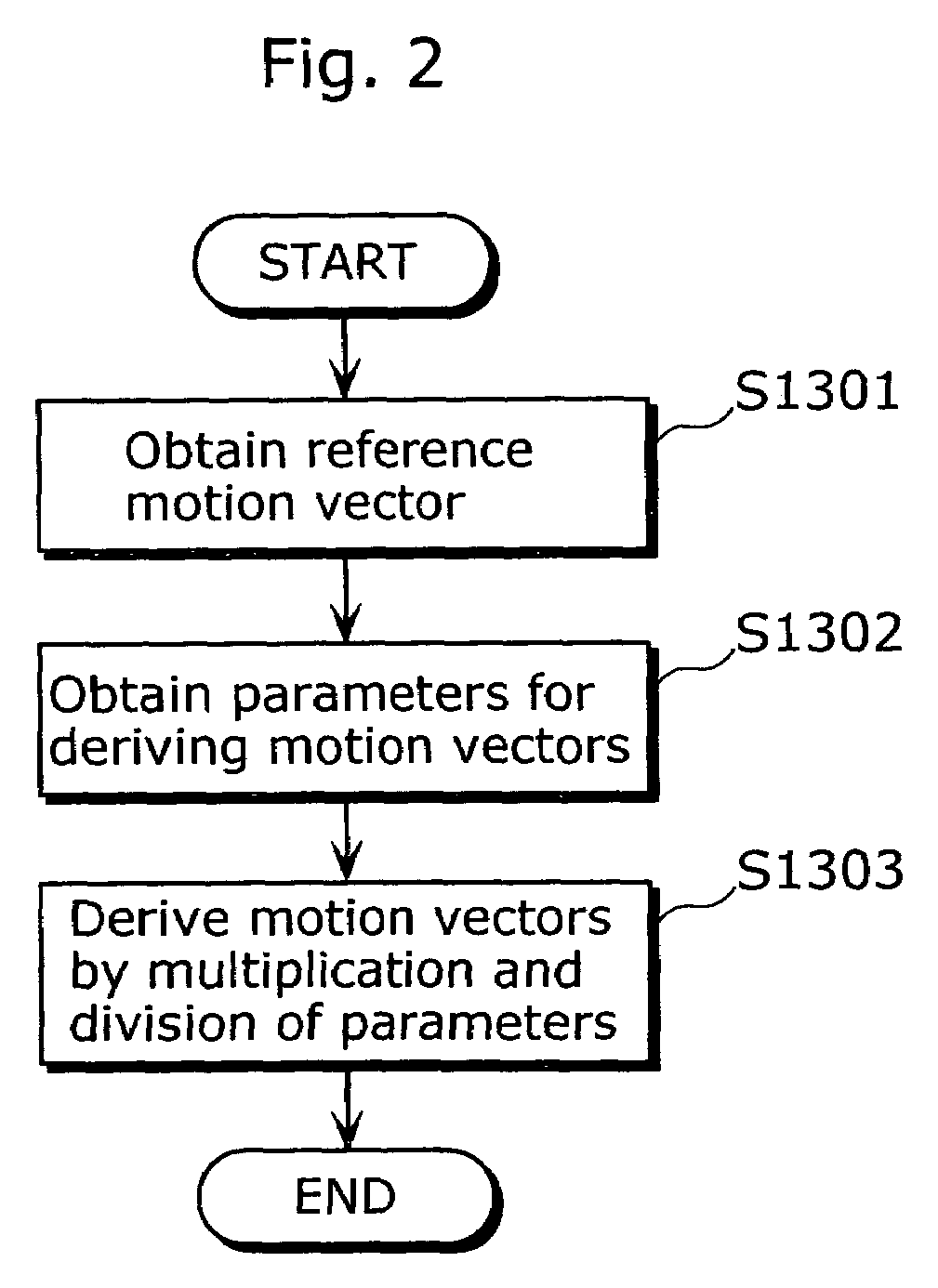Motion vector derivation method, dynamic image encoding method, and dynamic image decoding method
a dynamic image and vector technology, applied in the field of motion vector derivation method, dynamic image encoding method, dynamic image decoding method, can solve the problems of large memory capacity and more calculation time for division, and achieve the effect of simplifying the derivation of motion vectors
- Summary
- Abstract
- Description
- Claims
- Application Information
AI Technical Summary
Benefits of technology
Problems solved by technology
Method used
Image
Examples
first embodiment
[0044]FIG. 3 is a block diagram showing a structure of a moving picture coding apparatus according to the first embodiment. In FIG. 3, the terms which have already been explained in the background art with reference to FIG. 1 will be explained using the same signs as those in FIG. 1. The present embodiment is different from the conventional art in that parameters used for deriving motion vectors of the current picture to be coded 1202 are limited to a predetermined range of values.
[0045]As shown in FIG. 3, the moving picture coding apparatus includes a motion vector coding unit10, a motion vector derivation unit 11, a memory 12, a subtracter 13, an orthogonal transformation unit 14, a quantization unit 15, an inverse quantization unit 16, an inverse orthogonal transformation unit 17, an adder 18 and a variable length coding unit 19.
[0046]The motion vector coding unit 10 encodes motion vectors (such as MV1) of respective pictures for output as a motion vector stream. The motion vecto...
second embodiment
[0077]In the above first embodiment, when a motion vector MVtar that is a reference motion vector is scaled to derive motion vectors MVscl, a parameter TR1 is compared with the upper limit of divisors stored in a multiplier parameter table, and if TR1 is the upper limit or larger, a value corresponding to the maximum divisor in the multiplier parameter table is used as a multiplier parameter corresponding to the inputted parameter TR1. In the second embodiment, the parameter TR1 is compared with the upper limit of divisors stored in the multiplier parameter table, and if TR1 is the upper limit or larger, the inputted MVtar is used as it is as the motion vectors MVscl without scaling the motion vector MVtar, and thus derivation of the motion vectors MVscl can be simplified when TR1 is the upper limit or larger. The second embodiment of the present invention will be explained below with reference to figures.
[0078]FIG. 8 is a block diagram showing a structure of a motion vector derivat...
third embodiment
[0103]FIG. 13 is a block diagram showing a structure of a moving picture decoding apparatus according to the third embodiment.
[0104]As shown in FIG. 13, the moving picture decoding apparatus includes a variable length decoding unit1000, an inverse quantization unit 1001, an inverse orthogonal transformation unit 1002, an addition unit 1003, a motion vector decoding unit 1004, a motion vector derivation unit 1005 and a memory 1006. Note that the specific explanation of the structure and operation of the motion vector derivation unit 1005 will be omitted because they are same as those of the first and second embodiments.
[0105]The variable length decoding unit 1000 performs variable length decoding for the coded data stream outputted from the moving picture coding apparatus according to each of the above embodiments, and outputs coded prediction error data to the inverse quantization unit 100, and outputs at the same time motion vector derivation parameters TRtar and TR1 to the motion ...
PUM
 Login to View More
Login to View More Abstract
Description
Claims
Application Information
 Login to View More
Login to View More - R&D
- Intellectual Property
- Life Sciences
- Materials
- Tech Scout
- Unparalleled Data Quality
- Higher Quality Content
- 60% Fewer Hallucinations
Browse by: Latest US Patents, China's latest patents, Technical Efficacy Thesaurus, Application Domain, Technology Topic, Popular Technical Reports.
© 2025 PatSnap. All rights reserved.Legal|Privacy policy|Modern Slavery Act Transparency Statement|Sitemap|About US| Contact US: help@patsnap.com



